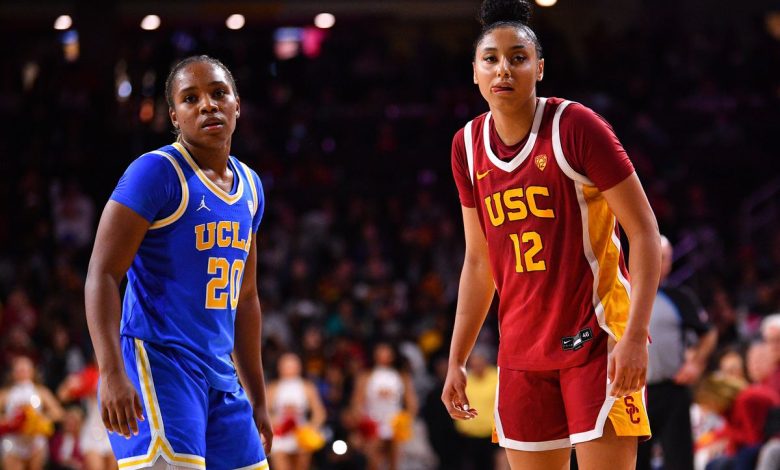The NCAA is considering implementing a coach’s challenge and switching college basketball from halves to quarters for improved gameplay.

In the ever-evolving landscape of college basketball, the NCAA is contemplating significant changes to the game that could reshape the way it is played, watched, and officiated. Among the potential changes under consideration are the introduction of a coach’s challenge and the switch from halves to quarters in the game’s structure. Both of these proposed changes are designed to improve gameplay, enhance the fairness of officiating, and bring college basketball in line with the international and professional standards that have proven successful.
The NCAA is no stranger to adapting the rules of the game in response to evolving trends in sports. Whether it is addressing issues around player safety, enhancing the pace of play, or improving the spectator experience, rule changes have always been part of the sport’s progression. However, the possibility of implementing a coach’s challenge and changing the format of the game are two of the most significant proposed shifts in recent history. These changes reflect the growing complexity of basketball, the increasing influence of analytics, and the desire to make the game fairer for players, coaches, and fans alike.
In this article, we will delve into these proposed changes—what they could mean for college basketball, how they might impact the game’s flow, and why the NCAA may be considering such dramatic changes to a game that has remained largely consistent for decades.
The Coach’s Challenge: A Step Toward Fairness and Accuracy
One of the key changes under consideration by the NCAA is the introduction of a coach’s challenge in college basketball. A coach’s challenge is a tool that allows a head coach to request a review of a specific call made by the officials during the game. The challenge would enable coaches to contest certain refereeing decisions that they believe are incorrect, such as fouls, out-of-bounds calls, or violations like traveling or goaltending. If the challenge is successful, the call is overturned; if it fails, the team loses the opportunity to challenge future calls, and they could potentially be penalized with a timeout or another form of disadvantage.
The concept of a coach’s challenge has already been implemented successfully in several major sports, including the NBA, NFL, and tennis. Its primary goal is to ensure that the most critical decisions in the game are made accurately, promoting fairness and transparency. While college basketball has had its fair share of controversial officiating calls over the years, the absence of a coach’s challenge has often left teams and fans frustrated when an incorrect call significantly impacts the outcome of a game.
Why a Coach’s Challenge?
There are several compelling reasons why the NCAA is considering the introduction of the coach’s challenge in college basketball:
1. Increased Accuracy in Officiating
Basketball is a fast-paced, dynamic sport where referees must make split-second decisions, often under pressure from the crowd, players, and coaches. With the introduction of a coach’s challenge, referees would have an additional safety net to ensure they get critical calls right. The challenge could be used to review plays where there is clear evidence of a mistake, such as a foul that should have been called or a three-point shot that was ruled to be a two-pointer.
The use of technology in officiating, such as instant replay, has been successful in other sports, and it has proven to enhance the overall accuracy of officiating decisions. Allowing coaches to challenge specific calls would bring the NCAA in line with the best practices seen in other professional leagues, potentially making college basketball a fairer and more precise sport.
2. Mitigating Human Error
No matter how experienced or trained the referees are, human error is an inevitable part of officiating. In a game as fast-paced and physical as basketball, referees are bound to miss calls or make mistakes. The ability to review certain plays would minimize the impact of these errors and ensure that the correct call is made when it truly matters.
By giving coaches the opportunity to challenge plays, the NCAA would reduce the number of potentially game-altering mistakes, which could lead to greater satisfaction among fans, players, and coaches. It also provides an opportunity to correct glaring errors in real-time, ensuring that the game’s outcome is determined by the players, not by bad officiating.
3. Promoting Strategic Decision-Making
Introducing a coach’s challenge would also add a new layer of strategy to college basketball. Coaches would need to think critically about when to use their challenge, balancing the importance of each call with the limited number of challenges they are allowed throughout the game. In high-stakes situations—such as the final minutes of a close game—having a challenge could be a game-changer. The element of strategy that comes with the challenge could make the game more exciting for fans and could give coaches a sense of control over the game’s flow.
4. Enhancing Fan Experience
Fans often become frustrated when controversial calls go against their team, especially if they feel the call was a clear mistake. The coach’s challenge could enhance the fan experience by providing an opportunity to right the wrongs of controversial officiating decisions. It could give fans the satisfaction of knowing that every effort was made to ensure the fairness of the game, helping to alleviate frustrations and fostering a more positive atmosphere.
Switching from Halves to Quarters: Modernizing the Game’s Structure
In addition to the coach’s challenge, another major change under consideration is the switch from playing two 20-minute halves to four 10-minute quarters. This proposed change has been widely discussed in the basketball world, as it aligns with the structure used in both the NBA and international basketball. While the NCAA has been steadfast in maintaining the two-half format for years, there is growing interest in transitioning to quarters to make the game more consistent with other levels of basketball and improve the flow of play.
Why the Switch to Quarters?
1. Alignment with Professional and International Basketball
One of the primary reasons the NCAA is considering a switch to quarters is to align more closely with professional basketball, particularly the NBA, and international basketball standards. The NBA, FIBA, and many other professional leagues around the world use a four-quarter system, which is widely accepted by players, coaches, and fans alike.
By adopting a similar structure, college basketball would reduce the gap between the amateur and professional game, making the transition to the NBA or international leagues easier for players. The rhythm and pacing of the game in quarters are familiar to players who may eventually play in the NBA, so the transition would be smoother. Additionally, aligning with FIBA rules could improve the NCAA’s standing on the international stage, helping American players better prepare for global competitions like the Olympics and the FIBA World Cup.
2. Improved Game Flow and Management
The switch to quarters would allow for more natural breaks in the game, giving teams additional opportunities for coaching adjustments, player rest, and strategic planning. In the current two-half format, teams have only one extended break, which can sometimes lead to periods of fatigue, especially in fast-paced games. The introduction of quarter breaks would provide better pacing, with teams able to regroup and refocus at more frequent intervals.
Furthermore, the change could help speed up the game by limiting the potential for time-wasting tactics in the second half. Currently, teams can stall in the final minutes of the game, knowing that the clock will continue to run unless a foul is committed. With the introduction of quarters, teams would be more incentivized to play at a higher pace, making the game more exciting for fans.
3. Increased Strategic Depth
Switching to quarters also introduces new strategic layers to the game, particularly in terms of how teams approach managing timeouts, player rotations, and foul management. In the current system, fouls are counted cumulatively over two halves, meaning that a player could accumulate fouls in the first half but still have plenty of time to play in the second half. With quarters, teams will need to be more conscious of how fouls accumulate, potentially leading to more nuanced decisions regarding player minutes and substitutions.
Similarly, the introduction of quarter breaks will give coaches more opportunities to make in-game adjustments. The additional timeouts and breaks will provide more strategic depth, especially in critical moments when every second counts.
4. More Balanced Play
One of the concerns with the current two-half format is that it can sometimes lead to uneven play. A team might dominate the first half, only to lose momentum in the second half, especially if the opposing team makes significant adjustments. The quarter format would help mitigate this by breaking the game into smaller segments, making it easier to track individual periods of success or failure. This could lead to a more balanced game, with teams being forced to maintain consistency across four quarters rather than being allowed to recover from a subpar first half.
Potential Challenges of These Changes
While both the coach’s challenge and the switch to quarters have the potential to enhance the game, there are also challenges that come with these changes. For the coach’s challenge, questions remain about how many challenges should be allowed per team and whether challenges could slow down the game. Similarly, switching to quarters may result in a significant adjustment for coaches, players, and referees, who have been accustomed to the current format.
Additionally, the impact on game length is a consideration. Some critics worry that the quarter format may lead to longer games due to more stoppages and additional reviews, which could detract from the overall fan experience.
A New Era for College Basketball
The NCAA’s potential decision to implement a coach’s challenge and transition from halves to quarters marks an exciting moment in the evolution of college basketball. These changes reflect a desire to modernize the game, improve the accuracy of officiating, and align the sport with international and professional basketball standards. While both changes could significantly impact the game’s flow, fairness, and fan engagement, they also promise to bring new layers of strategy, excitement, and accountability to the sport.
As the NCAA continues to explore these options, players, coaches, and fans alike will be watching closely to see how these changes could shape the future of college basketball. Ultimately, the goal is to create a better, more exciting product that remains true to the sport’s traditions while adapting to the demands of the modern game.









